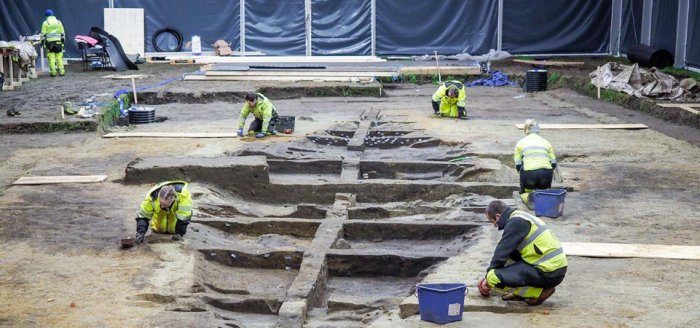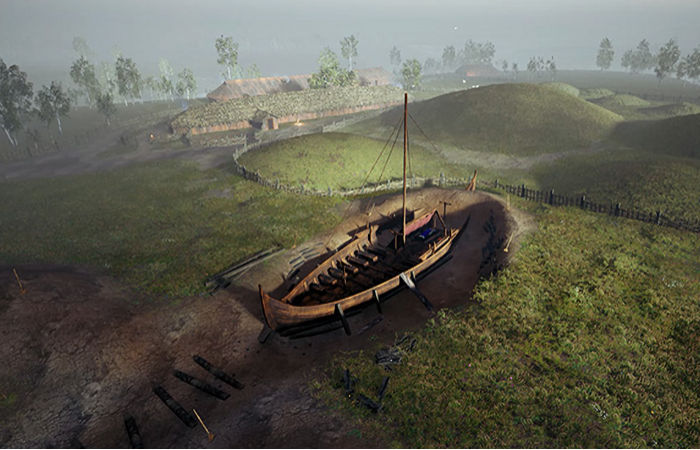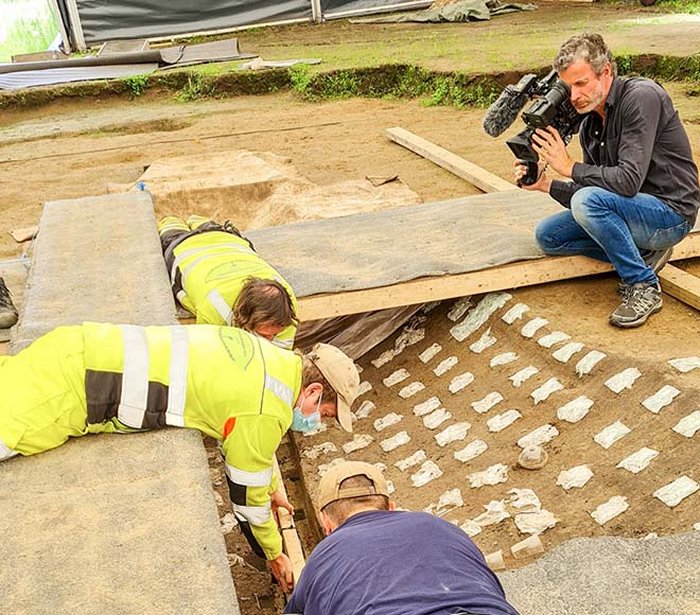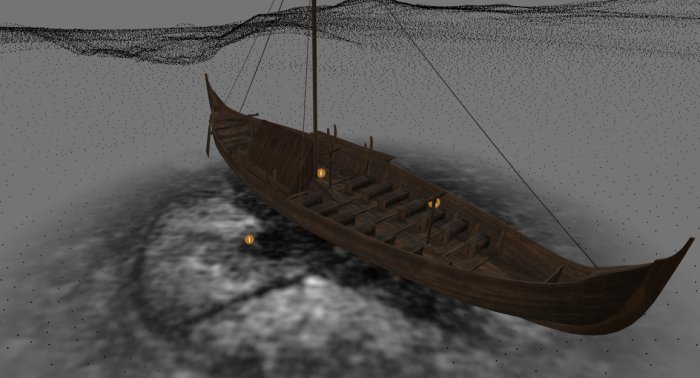Jan Bartek – AncientPages.com – One can easily imagine how impressive the 19-meter-long Gjellestad Viking ship must have been before being destroyed.
In 2018 archaeologists made an incredible discovery in Norway. Using high-resolution georadar, scientists unearthed a giant Viking ship, a Medieval settlement, and three burial mounds.

The Gjellestad ship. Credit: Museum of Cultural History
“We are certain that there is a ship there, but how much is preserved is hard to say before further investigation,” Morten Hanisch, county conservator in Østfold, said at the time of the discovery. Today, we know with certainty a giant Viking ship was unearthed at the site.
The Gjellestad Viking ship is huge, measuring nearly 20 meters, and yet, it’s smaller and narrower than the Oseberg ship and or Gokstad ship.
Scientists created a beautiful virtual reconstruction of the giant Gjellestad Viking ship burial, allowing anyone interested in the discovery to understand better what life was like at the time.
Scientists are now working on a challenging project aiming to reconstruct the Gjellestad Viking ship. Experts from the Museum of the Viking Age in Norway are digitizing the 1400 rivets that were removed from the ship. The aim is to complete an accurate, digital reconstruction of the Viking ship.

The reconstruction of the Gjellestad Viking ship burial site. Credit: Gjellestadstory.no
“The part of the ship that’s preserved was just over 19 meters long and a little more than four meters wide. We must probably add one or two meters to the length since the soil was ploughed, which means that the majority of the two stems are missing, says Christian Løchsen Rødsrud in a press statement.
When the excavation was completed, the archaeologists were left with around 8,000 finds and fragments they had extracted from the site, including almost 1400 rivets. Now, the painstaking work of CT-scanning all the rivets is well underway. Together with other digital documentation made during the excavation, the team will be able to recreate an almost exact digital reconstruction of the Viking ship.
Reconstructing The Gjellestad Ship
Such a digital reconstruction of the Gjellestad ship will provide unique and broader knowledge about shipbuilding traditions in the Viking Age.
“This is not just important in a Norwegian context, but also across Scandinavia and in the areas where the same ship technology was in use. With a complete digital data set, it is possible to build a reconstruction of the ship. It will facilitate further research on Viking Age ship technology. The new ship will likely have different technological solutions and thus also different qualities than the ships we know from previous excavations,” says Rødsrud.
“We scan an average of nine rivets a day, so it takes time. But we will probably have a complete model of the ship within the next year”, he continues.
The rivets are severely decomposed and are still in the blocks of soil that were extracted from the ship.

Credit: Museum of Cultural History.
The blocks have been preserved with a silicate-based consolidation agent that holds the soil together, with the rivet inside. This preserves the rivet exactly as it was in the ship’s imprint, making it possible to handle them.
With this method, the rivets can be put back where they were found, for instance, if the plans for building a visitor center at Gjellestad are realized.
Unfortunately, not much of the wood from the ship was preserved. This is due to more than a century of modern agricultural activity after the protective burial mound was removed, as well as the creation of a drainage ditch which lowered the groundwater, resulting in oxygen accelerating the decomposition process.
However, it was cause for celebration when the archaeologists were able to extract parts of the ship’s keel. This was also very degraded, and working on how best to preserve the keel has been exciting for the conservators.

Reconstruction of the Gjellestad Viking ship. Credit: Gjellestadstory.no
“Now the keel is placed in a water bath with polyethylene glycol (PEG), a water-soluble wax. When it has absorbed a sufficient amount of the solution, and is then freeze-dried, we can exhibit it if we wish. But it will be another year or two before it is ready for exhibition,” says conservator Ruben With at the Museum of Cultural History.
The probable dating of the Gjellestad grave is 800-850 AD.
“It is possible that we can date the burial all the way back to 780 AD because some of the bead types that were found in the grave began to circulate in Scandinavia around that time”, says Rødsrud.
Written by Jan Bartek – AncientPages.com Staff Writer





